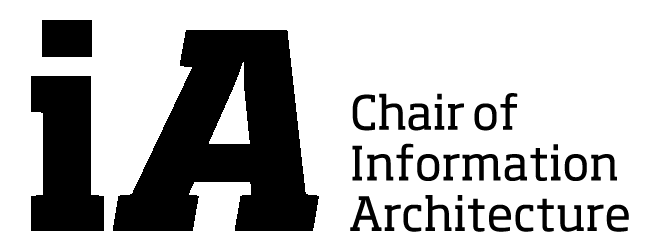L01 | 22.09.2008
INTRODUCTION INFORMATION ARCHITECTURE
This lecture discusses ideas associated with the phrase ‘Information Architecture’ and relates to them in meaningful ways as to how information can be gathered, organized and presented. We will discuss fundamental definitions, learn the difference between knowledge and information and we will discuss the inter-relationship between information and architecture.
L02 | 29.09.2008
THE ARCHITECTURE OF INFORMATION
The lecture provides a historical and future view on the Architecture of Information. We will take you on a journey starting with card boxes and leading to hypertext and ‘Web 3.0’. You will learn about space, structure and interface as three different properties of Information Architecture.
L03 | 06.10.2008
THINKING WITH YOUR EYES
You will get an overview on the difference between the research fields Information Design, Information Visualization and Knowledge Visualization. You will experience visual perception phenomena and develop an understanding on how our visual channel works.
L04 | 13.10.2008
INFO AESTHETICS
Aesthetics are an important issue in Visualization. A series of examples illustrates how it is possible to generate appealing forms from data. The collection of ideas serve as inspiration for the workshop.
L05 | 27.10.2008
TANGIBLE – Push.Klick.Touch.
People have developed sophisticated skills for sensing and manipulating our physical environments. However, most of these skills are not employed by traditional GUI (Graphical User Interface). Tangible Bits seeks to build upon these skills by giving physical form to digital information, seamlessly coupling the dual worlds of bits and atoms.
L06 | 03.11.2008
TANGIBLE AND TABLETOP INTERACTION GUESTLECTURE BY PROF DR MORTEN FJELD, GÖTEBORG
The objective behind Tangible User Interfaces (TUIs) is to allow users to interact with computers through familiar tangible objects, thereby taking advantage of the richness of the tactile world combined with the power of computer-based simulations. TUIs give physical form to digital information, employing physical artifacts both as representations and controls for computational media. http://www.cs.chalmers.se/idc/
L07 | 10.11.2008
RESPONSIVE ENVIRONMENTS
Not just confined to the fantasy worlds of films like ‘Minority Report’ or ‘The Matrix‘, digital technology-enabled spaces have invaded our lives, fundamentally affecting the identity of public, corporate, retail and cultural spaces, and connecting remote environments.
L08 | 17.11.2008
THE DIGITAL ORNAMENT
GUESTLECTURE BY DR KAI STREHLKE, SWITZERLAND | Location HPT, C103
New digital technologies are challenging the traditions of the architectural design methodology, the relationship between context and design,and the dependency on skilled workmanship for the fabrication of beautiful and complex architecture.
L09 | 24.11.2008
MEDIA ARCHITECTURE | GUESTLECTURE BY PROF DR TIM EDLER, REALITIES:UNITED, BERLIN | Location HPT, C103
realities:united develops and supports architectural solutions, which incorporate new media and information technologies e.g. the Kunsthaus Graz. One major focus is the outward communicative capacity of architecture, the quality of the user experience inside spaces, which are essentially augmented and changed by additional layers carrying information, media content and communication. http://www.realities-united.de Read the talk! BauNetz 2008 (Journal) www.baunetz.de


